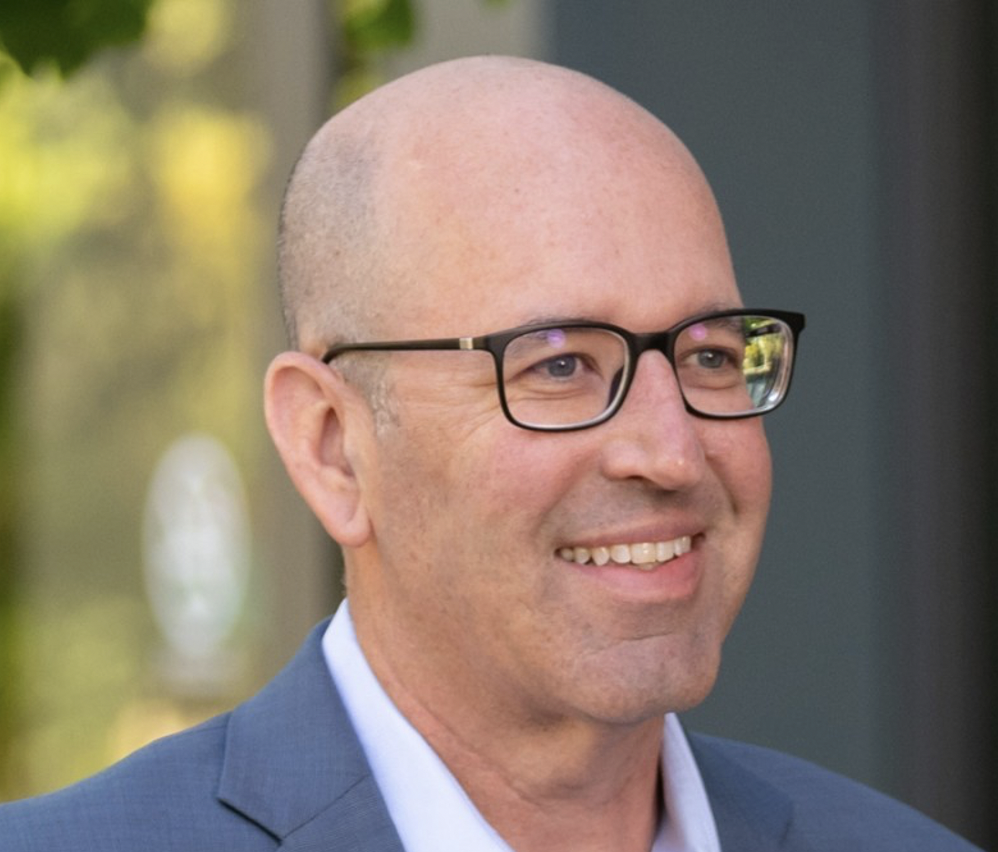Customer success entails far more than simply providing support and making customers happy — it’s about increasing value for both your customer and your company. Well-executed CS leads to greater user loyalty, more predictable revenue, and, ultimately, a more valuable company.
As VP of Customer Success at Lunio, Dan Farley knows plenty about setting up his team and customers to excel. Over the last seven years, Farley has worked for four early-stage companies, and in that time, has developed revenue-first CS strategies, because as he’d ask, “If it doesn’t drive revenue, why do it?”
Farley recently sat down with Crew Capital portfolio companies for a roundtable to discuss all things customer success and how it plays a crucial role in helping any growing startup become a world-class business.
Why customer success matters
According to Farley, customer success is a path to increasing a company’s enterprise value. It’s not just about a CS team — it’s about an entire company ethos. His CS philosophy looks like this:
Self-sustaining customer base + predictable revenue = Higher valuation
While the formula appears simple, there’s of course much more to the underlying components.
Self-sustaining customer base
Imagine your company shut off all new sales. Would your business continue to grow, or would it shrink? Farley poses this question because if CS is implemented well, it means every new business deal brought into a company immediately hits top-line business goals. When existing customers expand their budget each year through the renewal/up-sell process, this implies over 100% net revenue retention (discussed more below), and it is the foundation on which the SaaS industry was built. If a company would shrink without new sales, rather than continue to grow, it needs to re-examine its customer success strategy.
Predictable revenue
Investors hate unpredictable revenue — make no bones about it. When an investor puts in $1, they want to know they’re getting more than that on the other side. While startups may have wiggle room as they find product-market-fit, a rock-solid CS plan becomes paramount once they reach $5 million or $10 million in sales.
“I haven’t seen any business at that stage be able to develop predictable revenue streams without customer success,” Farley said.
The compounding effect of customer success
Borrowing from Winning by Design, a global B2B revenue consulting and training company, Farley cites the bow tie framework as a crucial way to envision the importance of CS: The sales cycle effectively never ends, and as companies sell to their existing customers over and over, every CS improvement compounds.
More importantly, CS teams should focus on immediate impact, rather than on renewal — if the customer buys more early, renewal becomes a formality based around that higher value, meaning CS teams don’t spend time upselling customers at renewal time. It also translates to a lower cost of acquisition and a shorter sales cycle, economizing time.
Net revenue retention as the primary CS metric
Farley values net revenue retention as his primary KPI when building customer success teams, and that breaks down into two components:
- Gross revenue retention, or how much of a startup’s annual recurring revenue (ARR) is retained from a given cohort of customers
- Revenue growth, or the incremental dollars that the same cohort of customers purchases
At Crew Capital, we consider net revenue retention to be one of the most important metrics that SaaS founders must track. Depending on the end-market that a startup sells into, there are differences in what good versus great looks like. For a startup selling to SMB, NRR in the 100-105% range might be healthy if the customer base is expanding rapidly on a per customer basis. For startups selling to mid-market or enterprise customers, 110-120% is good, 120-130% is great, and 130%+ is best-in-class.
To Farley, there’s no reason to wait for a certain sales threshold to start tracking NRR, either. It doesn’t mean startups need to track NRR from their very first customer, but starting at $1 million in revenue, NRR becomes important.
“Net revenue retention isn’t just a figure,” Farley said. “It’s a company-wide culture of customer growth.”
Even so, some companies may risk over-engineering their NRR to tell a convenient growth story. Farley said that’s far more common a mistake than simply miscalculating one figure or another.
“There’s nothing wrong with looking at variations on NRR,” he said. “But don’t try to tweak things and take things out to tell different stories.”
Focus on customer health score
While many customer success managers (CSMs) might work backward from a retention goal, Farley prioritizes customer health scores over retention goals to prevent CS teams from running first to customers up for renewal. Instead, health scores incorporate multiple data points such as:
- Platform/product health
- Recurring impact/achieving outcomes
- Customer experiences/advocacy
These data points help CSMs understand what goals their customers are looking to achieve with their product and provide greater insight into how CS teams can help them achieve those goals. Product and platform improvements spurred by customer feedback can then lead to improved NRR. Again, an immediate impact for the customer can translate to higher initial sales, which buoy revenue at renewal time.
The four stages of CS growth
Just as a company will change as it grows, the CS team’s challenges and initiatives will evolve over time, too. Farley has built this framework for CS teams to help compare the four stages he sees in a CS team’s life cycle: Reaction, Information, Proaction, and Growth. Reach out to Dan if you would like to see this framework in full.
Listening to the voice of the customer
At Lunio, a Series A stage company with millions of dollars in ARR, 55 percent of revenue comes from customer retention or growth. For companies at a similar stage, the voice of the customer becomes a greater driving force for the growth of the company, and many startups have dedicated programs that report data back to the business to reflect customer needs. Some will even grow into customer advocacy boards that support product development by providing perspective and feedback.
How to encourage candid customer feedback
Setting expectations early is paramount to getting great feedback. At Lunio, CSMs pledge to provide transparency as early as their kickoff call with customers. But they also ask for transparency in return that early, too. While there are a multitude of systems and processes to solicit feedback on product, like Pendo or Net Promoter Score surveys, the challenge is that often enough, people don’t want to share criticism or have difficult conversations, Farley says.
Sometimes great feedback can come from unlikely sources. Farley cited finance teams as often receiving feedback while following up on invoices and payments from customers, as they don’t come in with the same agenda as a CSM. In a smaller organization, the CEO should be talking to customers weekly to get feedback, as customers are more likely to tell the CEO what they think about that CEO’s business.
When should a startup hire their first CSM?
According to Farley, $1 million in ARR is a reasonable benchmark for startups to bring in their first customer success manager.
“You have to think about the P&L for the customer success team as early as possible,” he said. However, “fully loaded salaries, technology costs, and associated budget for the CS team shouldn’t exceed 10 percent of a startup’s annual recurring revenue.”
When to specialize CSM roles
In Farley’s opinion, beginning at $1.5M in ARR, it becomes important to delineate a dedicated CSM and a more technical solutions engineering role versus a do-it-all CSM. At that point, startups need CSMs to become revenue predictors – not do-it-all account managers. At Series B or Series C, having dedicated CSMs and account managers allows teams to focus on both expansion and new business without being distracted by one or the other. Additionally, if implementation is more than two months, startups should consider bringing on an onboarding and implementation manager.
Otherwise, it’s crucial to properly gauge how much CS work is thereby collecting the right data and evaluating the amount of work it translates to.
“Do not hire those roles unless the data is there,” Farley said. “How many support tickets are you getting every single day? What does that equate to in the amount of time your CSMs are taking on to support tickets? Is it one hour per week? You don’t need a support team. Is it eight hours a week? Then, yes, you need a support team.” Does that 8 hours a week equate to declining NRR rates and Engagement rates with customers?
What to look for in hiring CSMs
Farley bases his hiring around three main principles, and adds a fourth criteria when the product is highly technical:
- Entrepreneurial drive
- Core analytical capability
- Aligned with company values
- Domain expertise
A CSM’s ability to operate independently can make a huge difference, and being able to tell the right story from data is key. Ensuring CSMs are aligned with company values matters as much as any customer-focused trait, however, because as Farley said, “to some of your customers, your CSM is the only face of the company they may see.”
On domain expertise, Farley would challenge any hiring manager to think whether technical skills are required from the outset, or if a quick-learning CS can adapt and translate prior experience into newfound domain expertise. Hiring managers want to avoid eliminating great candidates based on domain expertise they don’t have, when it’s something they could pick up in the course of a few weeks.
The ideal synergy between CS, RevOps, and marketing
Farley’s advice on finding synergy across teams is once again to start with customer health.
“The outcome that all three of those are trying to drive is increased customer health,” Farley said. “And ultimately, that drives higher NRR. So work backwards from there.”
What’s a good ratio of customers-to-CSMs in a high-touch sales model?
The answer to this question depends on how many touch points are in the customer journey. Are there six? Are there 10? How many hours does a CSM spend on one customer? The more proactive and involved the customer journey, then the lower the number of customers one CSM can manage successfully.
“Ultimately, it all comes back to the profit and loss of that customer success department,” Farley said.
Tracking customer success and spending time wisely
Just because a customer seems happy doesn’t mean they’ll renew. Likewise, just because a customer seems unhappy, doesn’t mean they won’t. Farley related a story where he regularly spent two to three hours every two weeks with a large financial client who regularly “destroyed” him, but as he explained, it’s because the customer cared about the product and their combined success. That customer wanted to be a long-time customer.
On the flip side, CSMs need to set clear expectations about which questions are for them and which are best answered by support materials. Without setting that boundary, CSMs can get caught up in answering simple questions, which turns into something of a time suck and unproductive use of time. And if a customer no-shows a meeting, it’s clear that the meeting isn’t providing value to the customer.
“Everything you do at a company should drive a number,” Farley said.
Related Articles

Mihai Faur, CIO of UiPath, on Building Strategic Finance Teams
Crew Capital recently hosted Mihai Faur for a roundtable discussion with our portfolio companies. He shared insights on scaling finance…

Bobby Patrick on the Power of Marketing, Storytelling and Culture

Greg Henry: Shifting from Corporate Giant to Startup Dynamo and Priming for IPO Success
Greg Henry recently sat down with Crew Capital's Brandon Deer to discuss his transition from a company with 300,000 employees…








